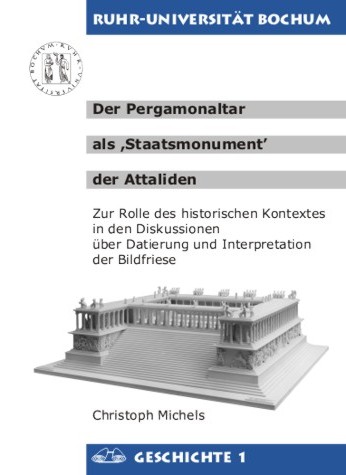
Der Pergamonaltar als "Staatsmonument" der Attaliden
Product Information
Product Description
The Great Altar now located in Berlin's Pergamon Museum is one of the most famous and best-preserved monuments of antiquity and has been the object of numerous studies since its rediscovery in 1864. Despite this immense interest, it has not yet been possible, due to the vanishingly few testimonies from antiquity, to arrive at an archaeologically material-based, generally accepted dating of the structure. There is also still uncertainty about the function of the building, which is generally referred to as an "altar." Consequently, archaeological research has attempted to relate the altar, whose impressive friezes are attributed a political message, to the decades of the 2nd century BC that are under discussion and were so eventful for the Attalid kingdom. During this time, Pergamon became a great empire thanks to its alliance with Rome and experienced its cultural flowering, only to find an abrupt end with the death of Attalus III and the inheritance of large parts of the kingdom by the Romans. It is the theories based on historical context about the origin and purpose of the Pergamon Altar that stand at the center of the present work.